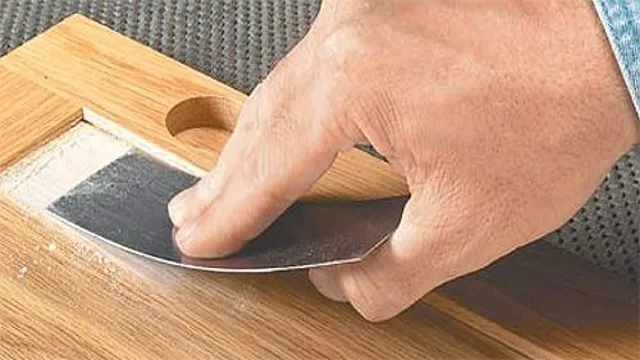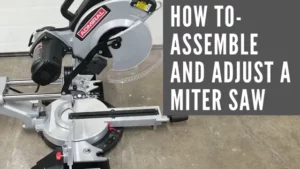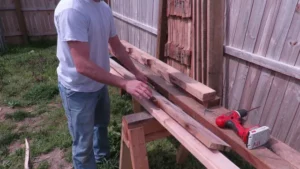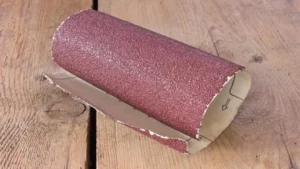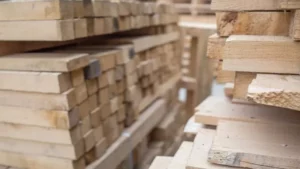Sanding is an essential step in any DIY project that requires a smooth and even surface. However, sanding into corners can be a daunting task, especially for beginners. Whether it’s for refinishing a piece of furniture or preparing a wall for painting, knowing how to sand into corners properly can make all the difference in achieving a professional-looking finish.
In this blog post, we’ll guide you through the steps on how to sand into corners effectively and efficiently. From choosing the right sandpaper grit to using the proper sanding technique, we’ve got you covered. So grab a cup of coffee, put on your DIY gloves, and let’s dive in!
Understanding the Process
If you’ve ever tried to sand down a corner or tight space, you know how frustrating it can be. But don’t worry, there are techniques to make the process easier. One strategy is to use a sanding sponge, which has a flexible surface that can contour to the shape of the corner.
Another option is to use a sanding block with angled edges that can reach into tight spots. Be sure to also use a fine-grit sandpaper, as a rough grit can damage the surface you’re sanding. And remember to wear eye protection and a mask to protect yourself from dust.
By taking the time to properly sand into corners, you can achieve a smooth surface that looks professional and polished.
Choose the right sandpaper grit
When it comes to achieving a smooth surface on your project, choosing the right sandpaper grit can make all the difference. Understanding the process of sanding is crucial in determining which grit to use. Starting with a coarse grit, such as 60 or 80, can quickly remove rough spots and imperfections.
However, it will leave deeper scratches on the surface, requiring a finer grit to remove them. The next step is to move on to a medium grit, such as 120 or 150, to smooth out those scratches left by the coarse grit and to refine the surface. Finally, finishing with a fine grit, such as 220 or 320, will result in a smooth and polished surface.
It’s important to remember that sanding is a gradual process and to not skip grits in order to achieve the desired result. By understanding the process and selecting the appropriate grit, your project will have a professional finish.
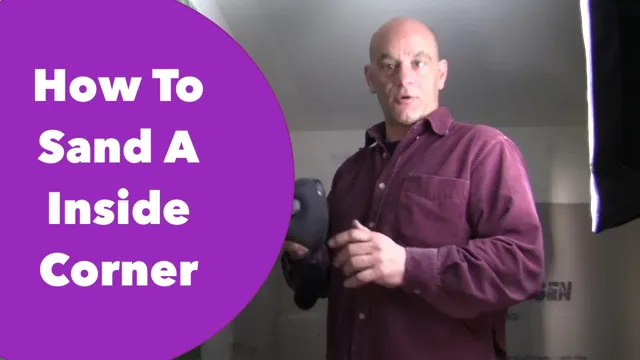
Get a good grip on your sanding tool
When it comes to sanding, getting a good grip on your sanding tool is crucial to achieving a smooth and polished finish. Before you begin, it’s important to understand the process of sanding to avoid damaging the material you’re working with. Sanding involves removing layers of material from the surface using abrasive materials such as sandpaper or sanding discs.
Depending on the type of material and the finish you want to achieve, you might need to start with a coarse grit and work your way up to a finer grit for a smoother finish. Holding your sanding tool with a proper grip is essential to ensure you get even and consistent sanding. A loose grip can cause uneven pressure and lead to uneven sanding, while holding the tool too tightly can cause fatigue in your hand and wrist.
Experiment with different grips to find what works best for you and your sanding project. By understanding the process and getting a good grip, you can achieve professional-level results in your sanding projects. Remember, practice makes perfect, so don’t be afraid to experiment and try new techniques to improve your sanding skills.
Start sanding at an angle
If you’re planning on sanding a surface, it’s important to know that starting at an angle can give you better results. When you sand in just one direction, you can leave behind visible scratches on the surface you’re working on. But when you start at a 45-degree angle and then switch to sanding in the opposite direction, you’ll create a crosshatch pattern that looks much more uniform.
This also helps to smooth out any rough spots or imperfections in the surface. It’s important to choose the right sandpaper grit for the job too, as using too fine a grit can take forever and using too coarse a grit can leave deep marks that are hard to remove. By taking the time to properly sand your surface, you can create a smooth, even finish that will look great and last for years to come.
Tips and Tricks
If you’ve ever tried to sand into corners, you’ll know it can be a tricky task. But fear not, there are a few tips and tricks that can help you achieve a smooth finish even in hard-to-reach areas. First, use a smaller sanding tool, such as a sanding sponge or a finger sanding pad.
These tools are maneuverable and can easily fit into tight spots. Second, try folding your sandpaper into small triangles that can reach those pesky corners. Third, use a little bit of elbow grease and sand with a circular motion.
This will ensure that you sand evenly and get into every nook and cranny. Lastly, don’t forget to vacuum or wipe away any dust or debris that accumulates during the sanding process. With a little patience and some clever techniques, you can achieve a flawless finish, even in those hard-to-reach areas.
Use a sanding sponge
When it comes to sanding, using sandpaper can be a hassle, especially when you need to sand uneven surfaces and curves. But worry not, there’s a solution that’s easier and more efficient– sanding sponges! These sponges are soft and flexible, making them ideal for sanding intricate shapes and contours. Plus, they are reusable and long-lasting, so you won’t have to keep buying new sandpaper.
With a sanding sponge, you can achieve a smooth and even finish on any surface, whether it’s wood, metal, or plastic. So next time you need to sand a surface, grab a sanding sponge and save yourself the headache of using sandpaper. Your hands and fingers will thank you.
Try a detail sander
If you’re tired of sanding by hand, or using bulky sanders that are difficult to maneuver, a detail sander might be just what you need. These versatile tools can tackle a variety of surfaces, from wood to metal to plastic. They’re designed to reach tight spaces and corners that other sanders can’t, making them perfect for detail work.
Plus, they’re lightweight and easy to control, so you can work for longer without getting tired. One of the main benefits of a detail sander is the variety of attachments available. Depending on your project, you can switch out the sanding pad for a buffing pad, a polishing pad, or even a cutting wheel.
This versatility makes a detail sander a great investment for any DIY enthusiast or professional woodworker. When using a detail sander, it’s important to wear eye and ear protection, as well as a dust mask. These sanders can create a lot of dust, which can be harmful if inhaled.
You should also start with a low grit sandpaper and work your way up to a higher grit, for a smooth finish. And don’t be afraid to experiment with different attachments and techniques, to find what works best for your project. Overall, a detail sander can save you time and effort, while giving you a professional-looking finish.
So if you’re looking for a way to take your DIY projects to the next level, give a detail sander a try!
Create a sanding block
When it comes to sanding, having the right tools is essential. One tool that can make your life a lot easier is a sanding block. A sanding block provides a flat surface to hold sandpaper, ensuring a smooth and even finish.
Creating a sanding block is easy, and all you need is a piece of scrap wood and some sandpaper. First, cut the wood to the desired size and shape. Then, attach the sandpaper to the block, making sure it is taut and secure.
The beauty of creating your sanding block is that you can customize it to fit your needs. For example, if you are working on a curved surface, you can shape the block accordingly. Plus, it saves you money and eliminates the need to purchase a standard sanding block.
So give it a shot and enjoy the satisfaction of using a tool you made yourself.
Safety Precautions
When it comes to sanding into corners, safety should always be a top priority. Before starting the job, make sure to wear protective gear such as a dust mask and safety goggles to avoid inhaling any harmful particles and to protect your eyes from dust and debris. It’s also important to make sure the area you will be working in is well-ventilated.
When sanding, use a small, handheld sanding tool that can easily fit into corners and tight spaces. Be sure to start with a fine sandpaper grit and work your way up to a coarser grit for more intense sanding needs. To avoid damaging neighboring areas, use masking tape to protect them before sanding.
Overall, taking the proper safety precautions will ensure a successful and safe sanding experience.
Wear eye and respiratory protection
When undergoing any activity that puts your eyes and respiratory system at risk, it is vital to prioritize safety first. This means wearing proper eye and respiratory protection, such as goggles or face masks, to avoid potential injury and illness. For instance, people who work in jobs involving dust and chemicals, like construction workers and chemical manufacturers, are at a higher risk of developing eye and respiratory health problems.
Wearing the right protective gear can significantly lower the chances of this happening. Even if your job doesn’t involve hazards that put your eyes or respiratory system at risk, certain activities like painting or cleaning can also pose threats. Remember to wear protection in those situations, as well, to avoid any potential harm.
Always bear in mind that prevention is the best method and that taking precautions could save you from the trouble of dealing with potential injuries or illnesses.
Always sand in a well-ventilated area
“Sanding in Well-Ventilated Areas: Safety Precautions” Sanding can be a messy and dusty job, and if done in an enclosed space, it can quickly become hazardous to your health. That’s why it’s important to always sand in a well-ventilated area to reduce the risk of inhaling harmful particles. A properly ventilated area allows for the dust and debris to disperse, rather than accumulate in the air.
If you’re sanding indoors, open windows and set up a fan to help circulate the air. If you’re working outside, ensure that you’re not sanding near others who could be affected by the dust. It’s also recommended to wear a dust mask, safety goggles, and gloves while sanding to further protect yourself.
By taking these safety precautions, you can ensure a safer and healthier sanding experience without putting yourself or others at risk.
Conclusion
In conclusion, sanding into corners may seem like a daunting task, but with the proper tools and technique, it can be achieved with ease. Just like navigating through life’s challenges, sometimes we need to get creative and think outside of the box to reach our goals. So go on, sand your way into those pesky corners and show them who’s boss! After all, life is too short to leave anything unfinished or unpolished.
“
FAQs
1. How can I sand into tight corners without damaging the surrounding surfaces? A: One effective method is to wrap a piece of sandpaper around a small, pointed tool such as a pencil or screwdriver and use it to sand the corners. Alternatively, you could use a flexible sanding sponge to get into hard-to-reach areas. 2. What grit sandpaper should I use for sanding corners? A: It depends on the surface you are sanding and the extent of the damage or imperfections. For rough surfaces, use a lower grit sandpaper (around 80 to 120 grit), while finer grits (above 220) are better suited for smoothing and polishing already-sanded surfaces. 3. How do I prevent dust buildup while sanding corners? A: One way is to use a vacuum cleaner with an attachment hose to suck up the dust as you sand. You could also wear a dust mask to protect your lungs from inhaling the dust. 4. Can I use an electric sander for corner sanding? A: While electric sanders can save time and effort, they may be too bulky or powerful for sanding corners. Consider using a manual sanding tool or sanding sponge instead. 5. How do I prepare the surface before sanding corners? A: Clean the area thoroughly and remove any loose debris, paint, or old finishes. For best results, use a primer or sealer to help the new coat of paint or finish adhere better and last longer. 6. What’s the best angle to approach corner sanding? A: Try to sand at a 45-degree angle to the corners to avoid gouging or scratching the surrounding surfaces. Use light-to-medium pressure and move the sanding tool in a circular or figure-eight motion for even results. 7. How do I know when to stop sanding the corners? A: Keep sanding until the corners are smooth and even, with no visible bumps or ridges. Use a touch-test to feel for any rough spots that need more sanding, and stop when you’re satisfied with the results.
